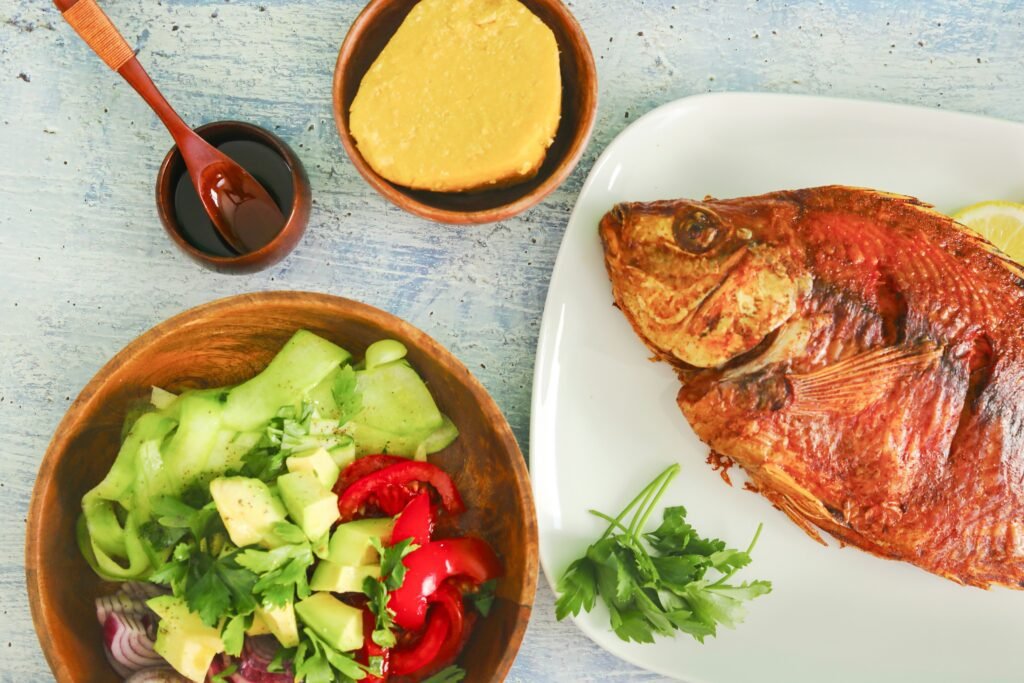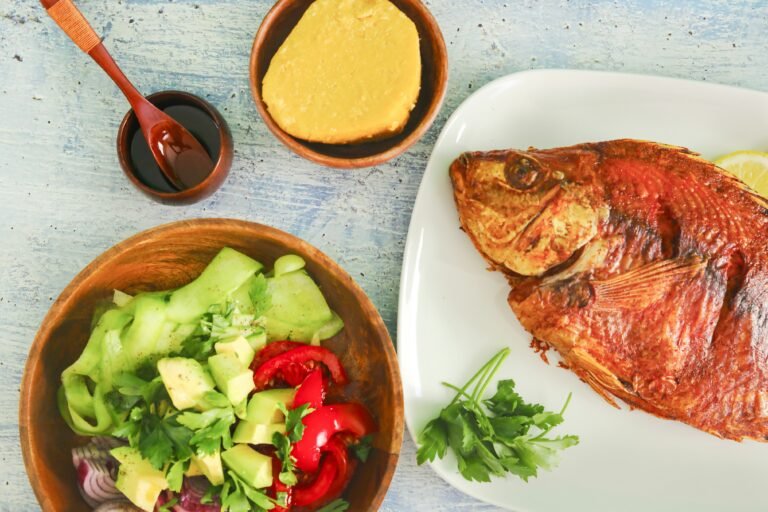Introduction
Tanzania’s culinary landscape is as diverse as its cultural heritage, offering an array of flavors that reflect the various influences that have shaped this East African nation. From the coast where seafood reigns supreme to the inland areas where traditional dishes like Ugali and Nyama Choma are staples, Tanzanian cuisine offers a journey through its rich history and vibrant cultures. Here’s your ultimate guide to exploring Tanzania’s local cuisine and the best spots to savor these delights.
1. Ugali
Ugali is a simple dish made from maize flour and water, forming a dense, polenta-like side dish. It is a staple food in Tanzania, often served with meat, fish, or vegetable sauces. A good place to try Ugali is at local eateries in Dar es Salaam where it’s often paired with sukuma wiki or a hearty meat stew.

2. Nyama Choma
Nyama Choma, which means “grilled meat” in Swahili, is East Africa’s favorite barbecue. Typically, it involves slow-grilling large chunks of meat until tender. One of the best places to enjoy Nyama Choma is at the popular Mamboz Corner BBQ in Dar es Salaam.
3. Zanzibar Pizza
Despite its name, Zanzibar Pizza is more similar to a stuffed pancake, filled with everything from minced meat and veggies to sweet options like banana and chocolate. This unique dish is a must-try at Forodhani Gardens food market in Stone Town, Zanzibar.
4. Mishkaki
Mishkaki is Tanzania’s version of skewered and grilled meat, marinated in a mix of lemon, garlic, and various spices. It’s especially popular as street food. The best Mishkaki can be savored on the streets of Arusha, where vendors serve it hot and juicy.
5. Mchemsho
Mchemsho is a flavorful and hearty stew that includes meat, vegetables, and sometimes eggs or bananas, seasoned with aromatic spices. It’s a common dish in northern Tanzania. Try it in a traditional restaurant in Moshi for an authentic taste.
6. Coconut Bean Soup
This creamy soup combines beans with coconut milk, creating a rich, comforting dish flavored with spices like turmeric and cumin. Enjoy this dish in coastal areas where coconut is a staple ingredient.
7. Octopus Curry
Influenced by Indian culinary traditions, Octopus Curry is a popular dish in coastal Tanzanian cuisine, especially in Zanzibar. The curry is rich and aromatic, simmered with a blend of spices. Sample this delicacy in a beachfront restaurant in Zanzibar.
8. Ndizi Kaanga
Ndizi Kaanga are fried plantains, a common side dish in Tanzania that pairs well with both savory and sweet dishes. They’re particularly popular as a snack or breakfast item. Look for freshly fried Ndizi Kaanga at local markets throughout Tanzania.
9. Wali wa Nazi
Wali wa Nazi is coconut rice, a fragrant dish that incorporates coconut milk for a creamy texture and rich flavor. It’s often served with fish or curries. Experience this dish where it’s most beloved, along the Swahili coast.
10. Kachumbari
Kachumbari is a fresh, tangy tomato and onion salad, often seasoned with chili peppers and lemon juice. It’s a refreshing side that complements heavier dishes like Nyama Choma. It’s widely available, but best enjoyed at outdoor barbecues.
Conclusion
Exploring Tanzania through its food offers insights into its cultural diversity and culinary traditions. Each dish tells a story of migration, trade, and local ingenuity. Whether you’re sampling street food or dining at a seaside restaurant, the flavors of Tanzania are sure to leave a lasting impression.




